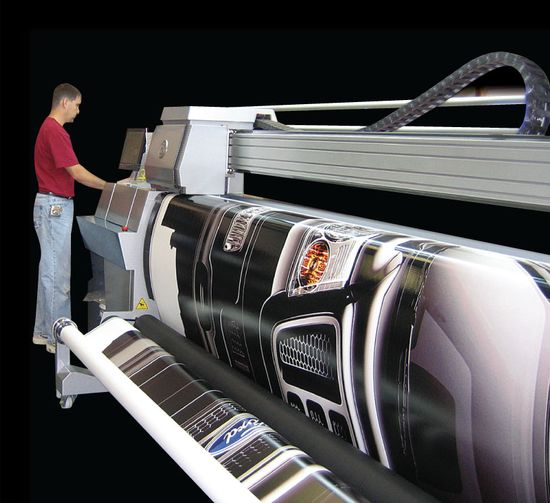The world of wholesale printing has evolved significantly since the invention of the printing press in the late 15th century. Technology is always improving, and if Gutenberg took a look at what wholesale printers are using today he would most likely not even begin to recognize the equipment.
The process of printing involves “pressing” text, images and designs onto paper and other materials. Initially, the process was actually pressing. A plate-maker would assemble an actual printing plate with individual letters and etchings, which was then coated with ink and pressed onto paper. Newspapers were commonly made with this technique well into the early 1900s. The process of manually creating the press-plates was replaced over time with computer generated plates, or screens. Today’s printers employ highly technical and sophisticated computer systems and design software in order to lay out the printed materials.
The other major difference that Gutenberg might notice is the availability of color printing. Naturally, when applying ink by hand to a press-plate was the common technique there was little room for multi-colored design. This is simply not the case today. Today, wholesale printers have access to technology that allows them to blend millions of difference colors from cyan, magenta, yellow and black inks, giving them the ability to print in any color the customer requests.
What you need to know when searching for a wholesale printer is the type of equipment that they utilize, what technology they have for design work and color blending and also the size of their customer base. The reason that this last item is so important is that when you approach a wholesale printer with a print job, they will prioritize the larges jobs with the shortest timeline first. Therefore, if you only need a few thousand or even less items printed your job could take much longer than if you needed tens of thousands of items printed. Wholesale printers earn a majority of their income from direct-mail companies who will order items in quantities of millions. Therefore, it is always best to know the size and type of the company’s customer base.
Speaking of quantity, many people not involved in the printing world do not realize that per-item cost reduces significantly with higher quantity orders. For example, if you were to order 1,000 postcards you might pay 40 cents per item for the printing. While, if you order 10,000 of the same postcard the price drops to 2 cents per item. Why is this the case? Well, remember that when you order a print job from a wholesale printer, they need to prepare the printing plates. This is a timely and costly part of the project known as setup. Setup also includes preparing the inks, cutting the postcards and starting up the presses. These things all require people and power. Thus, your startup cost is distributed across each item of your order. When you order a high quantity, the start up cost is identical to when you order a low quantity. Thus, after a certain point you are only paying for the printing and the cost savings are quite significant.
There are many wholesale printers located throughout the world and unlike the first printers in the 15th century – these companies generally all employ electronic file transfer systems and overnight shipping. For this reason, you have the option to select a printer that might be located in a different city, state or even a different country. This ability is definitely a benefit to those looking to find a wholesale printer. At the same time, competition in the wholesale printing industry can also prove beneficial to printers, who are able to obtain equipment and supplies at a lower rate than they would if the field was restricted.
Overall, the business of wholesale printing is necessary to the spread of printed information across the globe. It is important when you are looking for a wholesale printer, to look for the best rates and quickest turnaround time.

